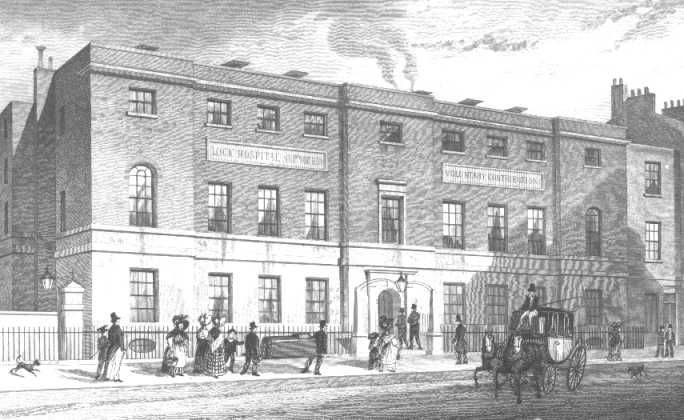
Wednesday, February 2, 2011
London Lock Hospital
In such a hedonistic century, STDs were far from uncommon. You could even go as far as saying venereal diseases were a national epidemic. A big statement, sure, but there were actually hospitals dedicated solely to the treatment of these diseases!
Lock Hospitals came to England in the thirteenth century. They were mostly for the treatment (if you could call it that) of lepers and evolved to other diseases that were dangerously contagious, hence being "lock" hospitals, to lock up the disease. By the eighteenth century leprosy wasn't an issue, but syphilis ran rampant. In 1747 the London Lock Hospital opened. Like the modern-day health clinics, sufferers of the neither regions who were short of cash could line up in hopes for some sort of relief. There were thirty clean beds for the patients but this being a time when there was no successful cure of syphilis the hospital probably only served as a place to get out of the rain and a hot meal.
Still, the charity-funded hospital was considered a success in the forward-thinking Age of Enlightenment which had also birthed, the Foundling and Magdalen Hospitals. In 1792 a sister-hospital opened up, Lock Asylum for the Reception of Penitent Female Patients. This was a rescue center for fallen women who were treated at the lock hospital and was meant to get them on their feet again. The lock hospital remained working throughout the centuries, eventually becoming a gynecological center before closing down in the 1950s.
Subscribe to:
Post Comments (Atom)

You may already be familiar with a book set in the 18th century called "Slammerkin", part of which deals with a former prostitute who stays for a time at a Magdalen Hospital. It's really interesting in that it shows what the routine of such a place was like, as well as the screening process for applicants.
ReplyDeleteNo, I hadn't heard, thanks for the tip!
ReplyDelete